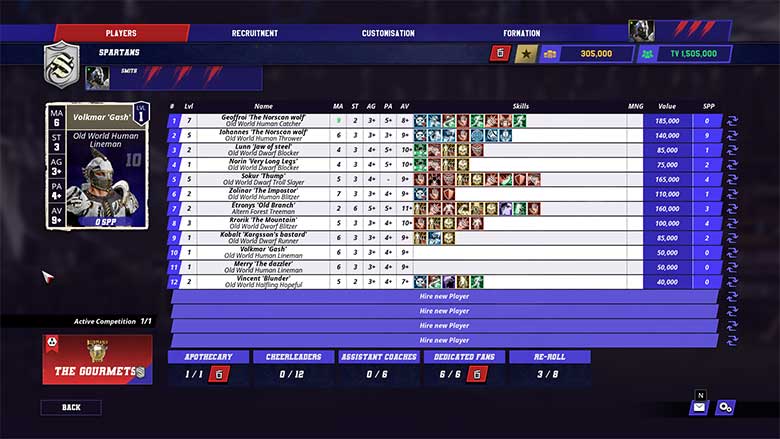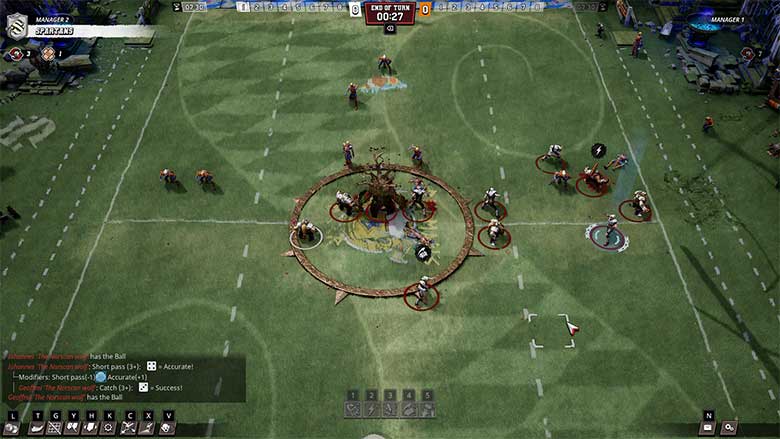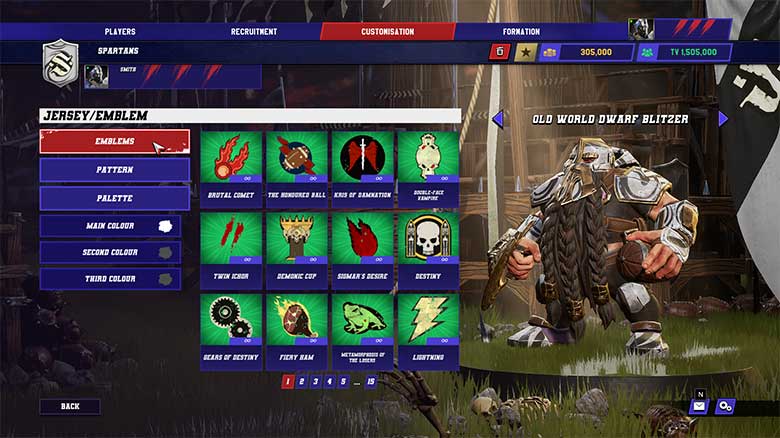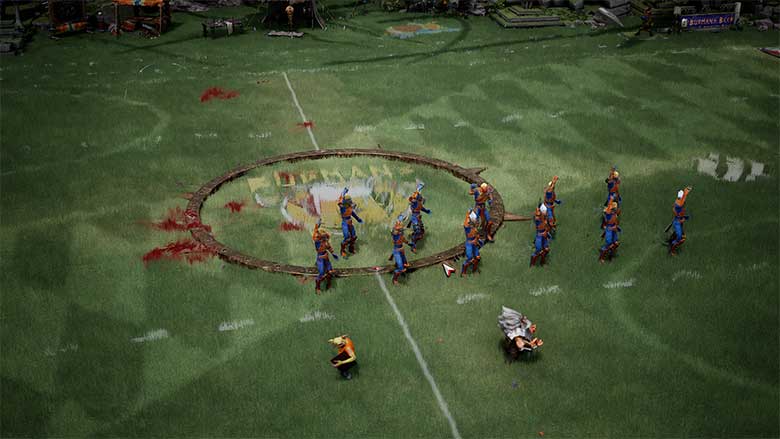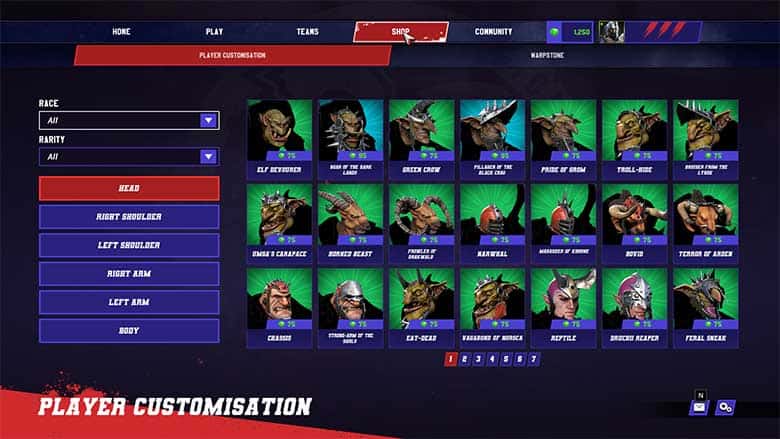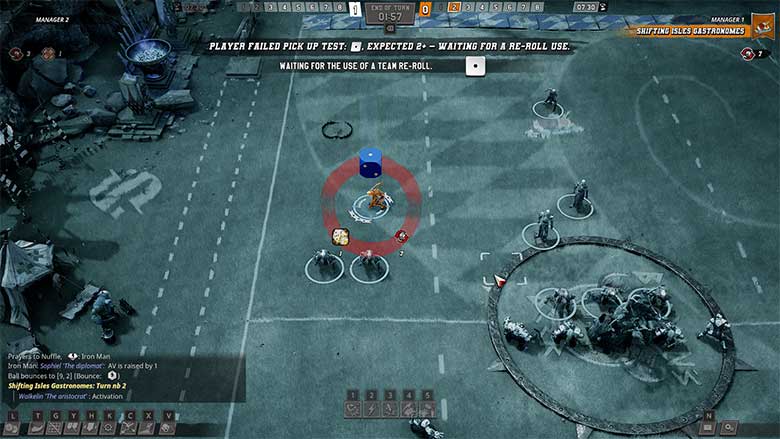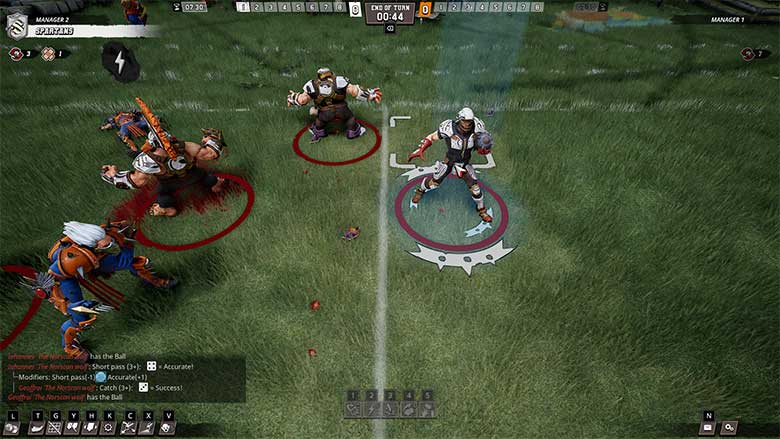Blood Bowl 3 Review

Official Score
Overall - 55%
55%
I have absolutely no doubt that 18-24 months from now Blood Bowl 3 is going to be the game the community has dreamed of for so long. However, as it stands today, it's the game we all hoped it wouldn't be.
Games Workshops’ brutal tabletop sports strategy game gets a fresh lick of paint to accompany a recently released new ruleset as Nacon and Cyanide release the highly anticipated Blood Bowl 3. For much of the 30-odd years since Blood Bowl’s original release in 1986, the game has been largely unsupported in any official capacity, with a living rulebook constructed and developed by the community as the backbone of the ruleset until recent years.
Games Workshop began official support again with a new box set and rule release in 2016 and again in 2020, with the release of Blood Bowl Second Season. This renewed interest in supporting the IP brought a lot of excitement to the passionate community. With Blood Bowl 3 being the first representation of an official rule set since the original game, expectations were high.
Unfortunately, for much of the community, these expectations were not met. Developing a game is challenging enough, but developing one for such a passionate and dedicated established community brings with it even more challenges – and many of these challenges were not overcome.
Blood Bowl 3 Review
Approaching a review for Blood Bowl 3 is a difficult ask. I review a lot of games, but seldom do I consider myself a “hardcore” fan of such games. I don’t follow the development as close as I did with Blood Bowl 3 and I rarely have such a vested interest, as an avid player of Blood Bowl in both videogame and tabletop formats. The way in which Cyanide have handled the release provides a very different experience, depending on whether you’re approaching the series for the first time or as a long-time fan.
Blood Bowl is a turn-based strategy game in which two teams field 11 players and each attempt to score more touchdowns than the other. As simplistic as it sounds, every turn feels as though it has as much choice and strategic depth as an entire game of chess. On your turn, you choose to take actions with individual players, deciding whether to move, block opponents, pass the ball, or dodge away. It’s a constant balancing act of risk versus reward, a balancing act that can never be a sure-fire thing, you’re only ever one failed dice roll away from ending your turn and suffering the consequences. Blood Bowl will always be a niche game, but for those with the patience and dedication, it offers endless hours of thrilling competition.
For newer players, Blood Bowl 3 is easily the best and most exciting way to play Blood Bowl’s latest ruleset. Practically every aspect of the game has seen improvements with vastly improved graphics, faster game times, and a much better campaign. There’s a lot to celebrate with the release of Blood Bowl 3 from the perspective of those players.
The campaign begins with a brief tutorial, one that’s good enough to provide information on the very basics, but still lacking for a game of Blood Bowl’s complexity. It then follows into small story campaigns centered around the various sponsors of the Blood Bowl universe. The new cutscenes and voice overs create for a more believable game world and something I hope the team continue to build on in the future. It improves on Blood Bowl 2’s campaign format as it’s available to all teams in the game, whereas Blood Bowl 2 only allowed a Human team to play through the campaign. This allows for far greater replay value, but still lacks the longevity of the Eternal Leagues available in Blood Bowl 2. As with much of Blood Bowl 3, it’s a step in the right direction, when we really should be seeing leaps.
One of the cornerstones of the tabletop Blood Bowl experience is the endless opportunity to customize and personalize each individual player. While Blood Bowl 2 did feature very basic customization options, Blood Bowl 3 is superior in just about every way. Each player on each team can be customized with different bits and pieces, swapping out torso designs or arms; it’s a system with so much potential. Accompanying the customization of each individual player is a suite of new options for customizing teams. Choosing your jersey design patterns and colors, picking staff like cheerleaders and coaches, changing the dice designs – it’s an aspect of the game I absolutely love, but one that is unfortunately largely hidden behind microtransactions at this time. One of the many controversial topics surrounding Blood Bowl 3’s “mostly negative” rating on Steam.
A large part of the appeal of Blood Bowl 3 is that it’s the first and only Blood Bowl videogame available that uses the latest ruleset that was released in 2020, and subsequently altered and developed with several official errata and errata’s of those errata’s. It’s Games Workshop, what can I say? Developers Cyanide, from very early on in development, claimed it was the closest representation of the tabletop rules in any videogame to date.
This is mostly accurate as the majority of the Second Season ruleset is in place, but at least some of the errata changes have yet to be implemented and many of the core rules are missing or incorrect. The Star Players, unique players that can be hired for single games, don’t have access to their unique skills, and many of the players themselves are MIA. Strangely, some of the basic skills players can earn through leveling up are also missing.
For newer players most of this will be unnoticeable, minor nuances in ruleset differences won’t have much of an effect on the new player experience but for long-term fans or those looking to dive heavily into the rules, the lack of 100% accuracy in a turn-based strategy game could feel disappointing.
Blood Bowl 3 has clearly been developed by a studio with a lot of love and passion for the Blood Bowl universe, but it just feels as though development was entirely segmented, without any communication between the various departments. The visual package as a whole is fantastic. Huge, sprawling stadiums filled with fans, cheerleaders and coaching staff decorating the sidelines. Each pitch is a visual feast, but when it all comes together you can’t help but ask: What the hell?
Players wearing certain uniforms blend into the pitch to the point of being nigh on invisible. Different positions on different teams, that were identifiable with a single glance in Blood Bowl 2, can now only be identified through several seconds of eye squinting and zooming in with the camera like an 80-year-old old trying to check an Instagram feed.
So many simple decisions that already had a tested and proven design philosophy in Blood Bowl 2 were changed and altered so much so that they no longer served the purpose they were designed to serve in the first place. Inspecting the opponents team during the inducement phase now requires analyzing a long line of players with new skills icons and mess everywhere. Does it look good? Definitely. Does it give you the information needed to make important decisions while hampered with a time limit? No. Renaming players requires navigating three menus for each player. This style over substance issues appear throughout and while it makes the game a pleasure to look at in most places, it makes it a right pain to interact with.
Then we get into the backbone of Blood Bowl, the single component responsible for the community keeping the tabletop game alive for so many years: the competitive scene. If there was one area of Blood Bowl 3 that needed to be executed well for a strong launch, it was the competitive side of the game, and this appears to have been entirely ignored. There is a single, official, online competitive mode but there’s no leaderboard, no stats, and core functions are just missing.
The ability to reconnect to a game after a player has lost connection doesn’t exist, and won’t for several months according to the developer roadmap. Expensive mistakes, a core balancing feature to control a teams finances, has yet to be implemented. Most of the Star Players are missing, and over 50% of the teams have yet to be released and won’t be feature complete for two to three years based on the current release schedule. If you’re looking to dive into the competitive scene of Blood Bowl 3, expect a rough ride for at least a few months.
When it comes to the core gameplay of Blood Bowl 3, not including the visual issues and a few game-breaking bugs, it’s superior to Blood Bowl 2 in every other way. The ability to queue actions of several players and the improved speed of animations creates for a fluid and fast-paced environment. The new clock system speeds up play but provides the perfect amount of time for the more complicated turns. Everything feels so much more alive and playing against other players on the basic pitches makes nearly all of the problems drift away, as once again you lose yourself in the highs and lows of Blood Bowl play, but those looking for a single player experience are going to struggle.
I’ve been unable to complete the campaign due to various bugs and problems with a very poorly designed AI opponent. While developers Cyanide have already made huge improvements in the stability since launch, I’m unsure the AI is such an easy fix. The AI is stupid, really stupid, more stupid than releasing a highly competitive game without the tools to facilitate competitions. It has eight rerolls and chooses not to reroll an action that would allow them to score. Another time it cannot decide whether to reroll or not and the game just gets stuck in a permanent state of doing nothing. It constantly attempts to cage the ball, a smart and valid tactic used by players every game, but does so in a way that baffles the mind.
Attempting four different dodge movements on a Troll, a “big guy” player that is about as agile as you would expect of a troll. Ending its turn without taking a single action. Beginning it’s turn with an action that’s near enough a 94% chance to fail. There is no I in this AI. If you are fortunate enough to avoid any of the game-breaking bugs, there’s a lot of fun to be had in decimating your opponent, but even newer players will quickly learn that there is zero challenge in the campaign setting.
Eventually, there will be a lot to love about Blood Bowl 3. The customization options are going to be fantastic when fully realized and hopefully not entirely locked behind a paywall. The gameplay is going to be smoother, faster, and better than Blood Bowl 2 in every way. The competitive scene, should cross-play be implemented, is going to be an absolute dream.
However, it’s just not there yet. You simply cannot release a game of this nature without half the teams, missing core rules, no competitive tools, a poorly explained micro-transaction model, and mind-bogglingly bad UI choices and not expect a negative reception.
I have absolutely no doubt that 18-24 months from now Blood Bowl 3 is going to be the game the community has dreamed of for so long. However, as it stands today, it’s the game we all hoped it wouldn’t be.
